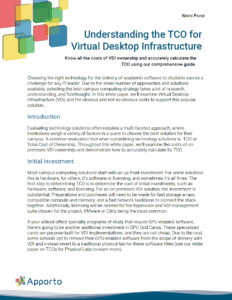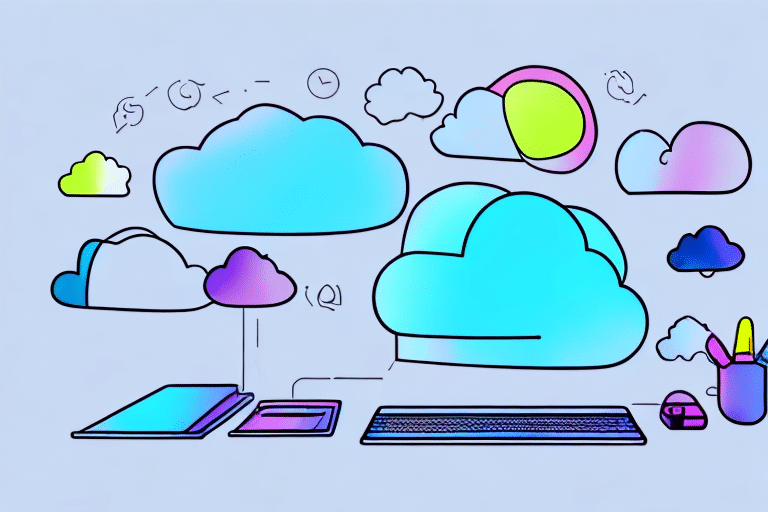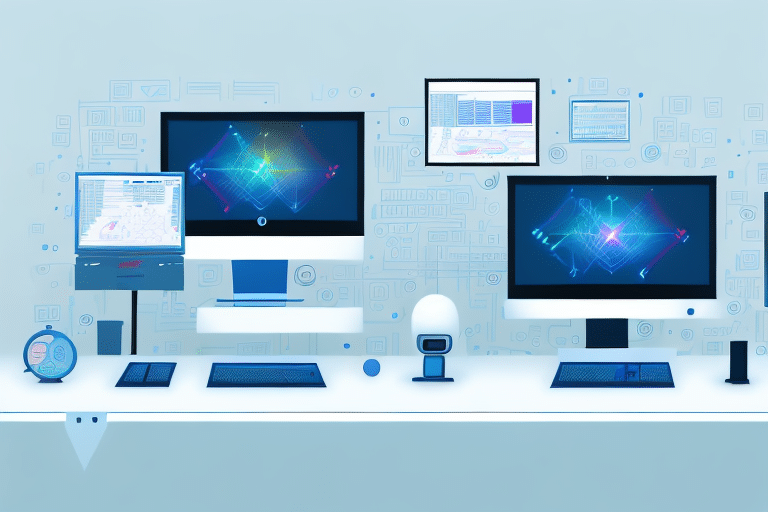In an era where the workplace is fundamentally changing, the concept of Desktop as a Service (DaaS) is quickly becoming integral to the success of hybrid work environments. This article explores DaaS’s function in facilitating a seamless transition between remote and in-office work, ensuring that companies can adapt to new norms while maintaining productivity and security.
Understanding DaaS: A Brief Overview
Defining DaaS and Its Core Components
Desktop as a Service (DaaS) is a cloud computing offering that allows businesses to deliver virtual desktops to end-users over the internet. This service enables employees to access their desktop environments from any device, anywhere, at any time. DaaS is characterized by several core components:
- Virtualization: DaaS employs virtualization technology to create a virtual desktop image that can be accessed remotely.
- Cloud Infrastructure: The hosting of virtual desktops occurs on a cloud platform, ensuring scalability and flexibility.
- User Management: Centralized management tools allow administrators to control access, deploy updates, and manage user permissions efficiently.
The Evolution of DaaS in the Digital Age
The origins of DaaS can be traced back to the broader trends in cloud computing and virtualization. Initially embraced by tech-savvy organizations, DaaS has grown to address the needs of various industries. As remote work has surged, particularly influenced by the global events of the past few years, DaaS has evolved to include advanced features such as enhanced security protocols and support for multi-device access. This evolution positions DaaS as a critical tool for future-ready organizations.
Furthermore, the rise of the gig economy has also played a significant role in the proliferation of DaaS solutions. Freelancers and contractors often require flexible working environments that can adapt to their varying needs. DaaS provides an ideal solution, allowing these workers to quickly set up and access their workspaces without the need for extensive hardware investments. Additionally, as organizations increasingly prioritize sustainability, DaaS offers a way to reduce energy consumption and hardware waste, aligning with corporate social responsibility goals. This shift not only enhances operational efficiency but also contributes positively to the environment, making DaaS an attractive option for modern businesses.
Moreover, the integration of artificial intelligence and machine learning technologies into DaaS platforms is paving the way for smarter, more intuitive user experiences. These technologies can analyze user behavior, optimize resource allocation, and even predict potential issues before they arise, thereby enhancing productivity and reducing downtime. As organizations continue to navigate the complexities of digital transformation, DaaS stands out as a versatile solution that not only meets current demands but also anticipates future challenges in the rapidly evolving landscape of work.
The Hybrid Work Environment: A New Norm
The Rise of Remote Work and Hybrid Models
The shift to remote work has prompted many organizations to reconsider their operational models. Hybrid work environments, which blend remote and in-office work, have gained traction as businesses seek to provide flexibility for their employees while maintaining a collaborative spirit. This hybrid approach not only promotes work-life balance but also attracts talent from a larger pool, as location becomes less of a constraint. Companies are now able to tap into diverse talent across different regions, enhancing creativity and innovation within teams. Furthermore, the flexibility offered by hybrid models can lead to increased job satisfaction, as employees can tailor their work environments to suit their personal preferences and productivity levels.
Challenges in Implementing a Hybrid Work Environment
Despite the numerous benefits, transitioning to a hybrid work model is fraught with challenges. Organizations often face:
- Technology Gaps: Not all organizations have the infrastructure to support seamless remote access and collaboration.
- Security Risks: Balancing security measures while allowing employees to work flexibly can be difficult.
- Employee Engagement: Maintaining team cohesion and collaboration poses challenges when team members work in different settings.
In addition to these challenges, companies must also navigate the complexities of managing a hybrid workforce. This includes developing clear communication protocols that cater to both in-office and remote employees. Regular check-ins, virtual team-building activities, and the use of collaborative tools can help bridge the gap between different working environments. Moreover, organizations need to invest in training and development programs that equip managers with the skills to lead hybrid teams effectively. By fostering an inclusive culture that values contributions from all employees, regardless of their work location, companies can enhance collaboration and drive productivity in this new era of work.
DaaS as a Solution for Hybrid Work Challenges
How DaaS Facilitates Remote Access
DaaS addresses many hybrid work challenges by providing a reliable and secure method for remote access. By delivering virtual desktops hosted on the cloud, employees can quickly log in and utilize the tools and applications they need without being restricted to physical office environments. This flexibility not only enhances productivity but also ensures that workloads are manageable regardless of an employee’s location. Furthermore, DaaS allows for seamless collaboration among team members who may be spread across different geographical locations. With centralized access to applications and files, teams can work together in real-time, share insights, and make decisions faster, fostering a more agile work culture.
Additionally, the scalability of DaaS solutions means that organizations can easily adjust their resources based on fluctuating demands. For instance, during peak project periods, companies can quickly provision additional virtual desktops for temporary staff or contractors without the lengthy setup times associated with traditional IT infrastructure. This adaptability not only optimizes resource allocation but also helps organizations respond swiftly to market changes and evolving business needs.
Ensuring Data Security and Compliance with DaaS
Security remains a paramount concern for businesses implementing hybrid work models. DaaS solutions often come with built-in security protocols that protect sensitive data through encryption, multi-factor authentication, and regular software updates. These features make it easier for organizations to comply with industry regulations and protect against data breaches. Moreover, DaaS providers typically employ advanced threat detection and response systems, which continuously monitor for unusual activities and potential vulnerabilities, allowing for proactive measures to be taken before any damage can occur.
In addition to these security measures, DaaS can also simplify the management of user access rights and permissions. Administrators can easily control who has access to specific applications and data, ensuring that sensitive information is only available to authorized personnel. This level of control is especially crucial in industries such as finance and healthcare, where compliance with strict regulatory frameworks is essential. By leveraging DaaS, organizations can not only enhance their security posture but also streamline their compliance efforts, reducing the risk of costly penalties associated with data mishandling.
The Benefits of DaaS in a Hybrid Work Environment
Enhancing Employee Productivity with DaaS
By using DaaS, organizations can empower their employees to work more efficiently. The flexibility of accessing their work environment from any location allows employees to choose where they work best, leading to increased job satisfaction and productivity. Moreover, since DaaS streamlines updates and maintenance from a central location, employees spend less time troubleshooting technical issues. This not only enhances their focus on core tasks but also fosters a culture of innovation, as employees are free to explore new ideas without the hindrance of outdated technology. Additionally, the ability to collaborate seamlessly with colleagues, regardless of their physical location, promotes teamwork and enhances communication, which are crucial in a hybrid work model.
Cost Efficiency and Scalability of DaaS
For many organizations, cost efficiency is a pivotal factor. DaaS reduces capital expenditure by eliminating the need to invest in physical hardware and infrastructure. Instead, organizations can opt for a pay-as-you-go model that scales with their needs. As businesses grow or evolve, DaaS can be adjusted accordingly, accommodating new users and additional resources without the typical slowdowns associated with traditional IT upgrades. Furthermore, this model allows organizations to allocate their budgets more effectively, investing in other areas such as employee training and development. The predictable monthly costs associated with DaaS also simplify financial planning, making it easier for businesses to forecast expenses and manage cash flow. In an era where agility is paramount, the scalability of DaaS ensures that companies can pivot quickly in response to market demands or changes in workforce dynamics.
Implementing DaaS in Your Organization
Key Considerations for DaaS Adoption
Before implementing DaaS, organizations must consider a range of factors to ensure a successful transition. These include assessing current infrastructure, evaluating cloud service providers for reliability and service levels, and determining the specific needs of the workforce. Engaging employees in this process can also yield valuable insights into the features and tools that would facilitate their work most effectively. Additionally, organizations should take into account the potential impact on data security and compliance, especially if sensitive information is being handled. Understanding the regulatory landscape and ensuring that the chosen DaaS solution adheres to necessary compliance standards is crucial to mitigate risks and protect organizational assets.
Best Practices for DaaS Implementation
To maximize the benefits of DaaS, organizations should adhere to best practices during implementation. This includes:
- Conducting a Pilot Program: Testing DaaS with a smaller group can identify potential issues before a full rollout.
- Providing Training: Ensuring that employees are comfortable and proficient with the new system is essential for its adoption.
- Regularly Reviewing Performance: Collecting feedback and monitoring the system’s performance helps organizations adjust and optimize the DaaS environment continually.
Moreover, it is important to establish clear communication channels throughout the implementation process. Keeping all stakeholders informed about the progress, challenges, and successes of the DaaS rollout can foster a culture of collaboration and transparency. Organizations should also consider integrating DaaS with existing IT management tools to streamline operations and enhance user experience. By leveraging automation and analytics, businesses can gain deeper insights into usage patterns and resource allocation, which can inform future decisions and improvements. This proactive approach not only enhances operational efficiency but also positions the organization to adapt swiftly to evolving technological advancements and workforce needs.
By understanding and strategically implementing DaaS, organizations can empower their workforce, overcome the inherent challenges of hybrid work models, and ensure a secure, productive, and satisfying work environment for all employees.











